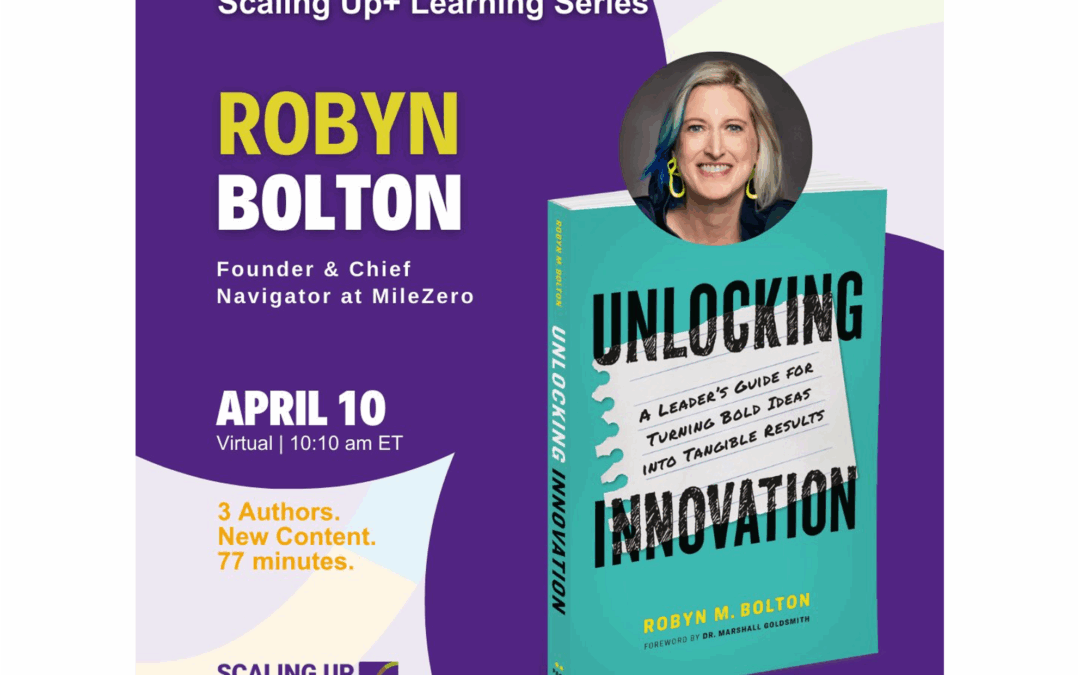
by Robyn Bolton | Jun 25, 2025 | Leadership, Stories & Examples, Strategy
Convinced that Strategic Foresight shows you a path through uncertainty? Great! Just don’t rush off, hire futurists, run some workshops, and start churning out glossy reports.
Activity is not achievement.
Learning from those who have achieved, however, is an excellent first activity. Following are the stories of two very different companies from different industries and eras that pursued Strategic Foresight differently yet succeeded because they tied foresight to the P&L.
Shell: From Laggard to Leader, One Decision at a Time
It’s hard to imagine Shell wasn’t always dominant, but back in the 1960s, it struggled to compete. Tired of being blindsided by competitors and external events, they sought an edge.
It took multiple attempts and more than 10 years to find it.
In 1959, Shell set up their Group Planning department, but its reliance on simple extrapolations of past trends to predict the future only perpetuated the status quo.
In 1965, Shell introduced the Unified Planning Machinery, a computerized forecasting tool to predict cash flow based on current results and forecasted changes in oil consumption. But this approach was abandoned because executives feared “that it would suppress discussion rather than encourage debate on differing perspectives.”
Then, in 1967, in a small 18th-floor office in London, a new approach to ongoing planning began. Unlike past attempts, the goal was not to predict the future. It was to “modify the mental model of decision-makers faced with an uncertain future.”
Within a few years, their success was obvious. Shell executives stopped treating scenarios as interesting intellectual exercises and started using them to stress-test actual capital allocation decisions.
This doesn’t mean they wholeheartedly embraced or even believed the scenarios. In fact, when scenarios suggested that oil prices could spike dramatically, most executives thought it was far-fetched. Yet Shell leadership used those scenarios to restructure their entire portfolio around different types of oil and to develop new capabilities.
The result? When the 1973 oil crisis hit and oil prices quadrupled from $2.90 to $11.65 per barrel, Shell was the only major oil company ready. While competitors scrambled and lost billions, Shell turned the crisis into “big profits.”
Disney: From Missed Growth Goals to Unprecedented Growth
In 2012, Walt Disney International’s (WDI) aggressive growth targets collided with a challenging global labor market, and traditional HR approaches weren’t cutting it.
Andy Bird, Chairman of Walt Disney International, emphasized the criticality of the situation when he said, “The actions we make today are going to make an impact 10 to 20 years down the road.”
So, faced with an unprecedented challenge, the team pursued an unprecedented solution: they built a Strategic Foresight capability.
WDI trained over 500 leaders across 45 countries, representing five percent of its workforce, in Strategic Foresight. More importantly, Disney integrated strategic foresight directly into their strategic planning and performance management processes, ensuring insights drove business decisions rather than gathering dust in reports.
For example, foresight teams identified that traditional media consumption was fracturing (remember, this was 2012) and that consumers wanted more control over when and how they consumed content. This insight directly shaped Disney+’s development.
The results speak volumes. While traditional media companies struggled with streaming disruption, Disney+ reached 100 million subscribers in just 16 months.
Two Paths. One Result.
Shell and Disney integrated Strategic Foresight differently – the former as a tool to make high-stakes individual decisions, the latter as an organizational capability to affect daily decisions and culture.
What they have in common is that they made tomorrow’s possibilities accountable to today’s decisions. They did this not by treating strategic foresight as prediction, but as preparation for competitive advantage.
Ready to turn these insights into action? Next week, we’ll dive into the tools in the Strategic Foresight toolbox and how you and your team can use them to develop strategic foresight that drives informed decisions.

by Robyn Bolton | Jun 17, 2025 | Leadership, Strategy
Are you spooked by the uncertainty and volatility that defines not just our businesses but our everyday lives? Have you hunkered down, stayed the course, and hoped that this too shall pass? Are you starting to worry that this approach can’t go on forever but unsure of what to do next? CONGRATULATIONS, consultants have heard your cries and are rolling out a shiny new framework promising to solve everything: Strategic Foresight.
Strategic foresight is the latest silver bullet for navigating our chaotic, unpredictable world.
Remember in 2016 when Agility was going to save us all? Good times.
As much as I love rolling my eyes at the latest magic framework, I have to be honest – Strategic Foresight can live up to the hype. If you do it right.
What Strategic Foresight Actually Is (Spoiler: Not a Silver Bullet)
A LOT is being published about Strategic Foresight (I received 7 newsletters on the topic last week) and everyone has their own spin. So let’s cut through the hype and get back to basics
What it is: Strategic foresight is the systematic exploration of multiple possible futures to anticipate opportunities and risks, enabling informed decisions today to capture advantages tomorrow.
There’s a lot there so let’s break it down:
- Systematic exploration: This isn’t guessing, predicting, or opining. This is a rigorous and structured approach
- Multiple possible futures: Examines multiple scenarios because we can’t possibly forecast or predict the one future that will occur
- Enabling informed decisions today: This isn’t an academic exercise you revisit once a year. It informs and guides decisions and actions this year.
- Capture advantages tomorrow: Positions you to respond to change with confidence and beat your competition to the punch
How it fits: Strategic Foresight doesn’t replace what you’re doing. It informs and drives it.
| Approach |
Timeline |
Focus |
| Strategic Foresight |
5-20+ years |
Explore possible futures |
| Strategic Planning |
3-5 years |
Create competitive advantage |
| Business Planning |
Annual cycles |
Execute specific actions |
The sequence matters: Foresight → Strategic Planning → Business Planning.
This sequence also explains why Strategic Foresight is so hot right now. Systemic change used to take years, even decades, to unfold. As a result, you could look out 3-5 years, anticipate what would be next, and you would probably be right.
Now, systemic change can happen overnight and be undone by noon the next day. Whatever you think will happen will probably be wrong and in ways you can’t anticipate, let alone plan for and execute against.
Strategic Foresight’s rigorous, multi-input approach gives us the illusion of control in a world that seems to be spinning out of it.
How to Avoid the Illusion and Get the Results.
Personally, I love the illusion of control BUT as a business practice, I don’t recommend it.
Strategic Foresight’s benefits will stay an illustion if you don’t:
- Develop in-house strategic foresight capabilities. Amy Webb’s research at NYU shows that companies using rigorous foresight methodologies consistently outperform those stuck in reactive mode. Shell’s legendary scenario planning helped them navigate oil crises while competitors flailed. Disney’s Natural Foresight® Framework keeps them ahead of entertainment trends that blindside others.
- Integrate foresight into your annual strategic planning cycle: Strategic foresight is a front-end effort that makes your 3-5 year strategy more robust. If you treat it like a separate exercise where you hire futurists, and run some workshops, and check the Strategic Foresight box, you won’t see any benefits or results.
What’s Next?
Strategic foresight isn’t a silver bullet, but it can be a path through uncertainty to advantage and growth.
The difference between success and failure comes down to execution. Do you treat it as prediction or preparation? Do you integrate it with existing planning or silo it in innovation labs?
Ready to separate the hype from the hard results? Our next post shows you what two industry leaders learned about turning foresight into competitive advantage and how you can use those lessons to your benefit

by Robyn Bolton | May 21, 2025 | Innovation, Leadership, Tips, Tricks, & Tools
“What will you do on vacation?” a colleague asked.
“Nothing,” I replied.
The uncomfortable silence that followed spoke volumes. In boardrooms and during quarterly reviews, we celebrate constant motion and back-to-back calendars. Yet, study after study shows that the most successful leaders embrace a counterintuitive edge: strategic idleness.
While your competitors exhaust themselves in perpetual busyness, research shows that deliberate mental downtime activates the brain networks responsible for strategic foresight, innovative solutions, and clear decision-making.
The Status Trap of Busy-ness
At one company I worked with, there was only one acceptable answer to “How are you doing?” “Busy.” The answer wasn’t a way to avoid an awkward hallway conversation. It was social currency. If you’re busy, you’re valuable. If you’re fine, you’re expendable.
A 2017 study published in the Journal of Consumer Research confirmed what Columbia, Georgetown, and Harvard researchers discovered: being busy is now a status symbol, signaling “competence, ambition, and scarcity in the market.”
But here’s the uncomfortable truth: your packed schedule is undermining the very outcomes you’re accountable for delivering.
Your Brain’s Innovation Engine
Neuroscience has confirmed what innovators have long practiced: Strategic Idleness. While you consciously “do nothing,” your default mode network (DMN) engages, making unexpected connections across stored information and experiences.
Recent research published in the journal Brain demonstrates that the DMN is activated during creative thinking, with a specific pattern of neural activity occurring during the search for novel ideas. This network is essential for both spontaneous thought and divergent thinking, core elements of innovation.
So if you’ve always wondered why you get your best ideas in the shower, it’s because your DMN is powered all the way up.
Three Ways to Power-Up Your Engine
Here are three executive-grade approaches to strategic idleness without more showers or productivity sacrifices:
- Pause for 10 Minutes Before Making a Decision
Before making high-stakes decisions, implement a mandatory 10-minute idleness period. No email, no conversation—just sitting. Research on cognitive recovery suggests that this brief reset activates your DMN, allowing for a more comprehensive consideration of variables and strategic implications.
- Take a Walking Meeting with Yourself
Block 20 minutes in your calendar each week for a solo walking meeting (and then take the walk!). No other attendees, no agenda, just walking. Researchers at Stanford University found that walking increases creative output by an average of 60% compared to sitting. The combination of physical movement and mental space creates ideal conditions for your brain to generate solutions to problems you didn’t know you had.
- Schedule 3-5 minutes of Strategic Silence before key discussions
Research on group dynamics shows that silent reflection before discussion can reduce groupthink and increase the quality of ideas by helping team members process information more deeply. Before you dive into a critical topic at your next leadership meeting, schedule 3-5 minutes of silence. Explain that this silence is for individual reflection and planning for the upcoming discussion, not for checking email or taking bathroom breaks. Acknowledge that it will feel awkward, but that it’s critical for the upcoming discussion and decision.
Remember, You’re Not Doing Nothing If You’re being Strategically Idle
The most valuable asset in your organization isn’t technology, capital, or even the products you sell. It’s the quality of thinking that goes into critical decisions. Strategic idleness isn’t inaction; it’s the deliberate cultivation of conditions that foster innovation, clear judgment, and strategic foresight.
While your competitors remain trapped in perpetual busyness, by using executive advantage of strategic idleness, your next breakthrough will present itself.
This is an updated version of the June 9, 2019, post, “Do More Nothing.”

by Robyn Bolton | Apr 15, 2025 | Innovation, Leadership
“The call is coming from inside the house” is one of those classic quotes that crossed over from urban legend and horror movies to become a common pop-culture phrase. While originally a warning to teenage babysitters, recent research indicates that it’s also a warning to corporate execs that murderous business threats are closer than they think.
In the early weeks of 2025, Box of Crayons, a Toronto-based learning and development company, partnered with The Harris Poll to survey over 1500 business leaders and knowledge workers to diagnose and understand the greatest challenges facing organizations.
They found that “while there is a tendency to focus on external pressures like economic uncertainty, technological disruptions, and labor market issues, our research shows the most critical challenges are unfolding within the workplace itself.”
The threat is coming from inside your house.
Here’s what they found and what you can do about it
Nearly 1 day each workweek “is lost to the fear of making mistakes.”
Fear is at the core of all the issues making headlines – burnout, disengagement, lost productivity. It “breeds doubt, prompting individuals to question themselves and others, instigating anxiety, hindering productivity, and promoting blame instead of teamwork.”
Fear is also a virus, spreading rapidly from one person to their team members and on and on until it infects the entire organization, embedding itself in the culture.
Executives and managers are key to breaking the cycle of fear that kills innovation, initiative, and growth. By reframing mistakes and learnings, rewarding smart risks even if they result in unexpected outcomes, and role-modeling behaviors that encourage trust and psychological safety, their daily and consistent actions can encourage bravery and remaking the culture.
70% of people don’t see value in listening to people they disagree with.
Unless you’re employed by Lumon Industries, it’s impossible to be a completely different person at work compared to who you are outside of work. So, it should come as no surprise that most people no longer listen to opinions, perspectives, or evidence with which they disagree.
The problem is that different perspectives and experiences are essential to elements of the problem-solving process. Without them, we cannot learn, develop new solutions, and innovate.
Again, executives and managers play a critical role in helping to surface diverse points of view and helping employees to engage in “productive conflict.” Rather than rushing to “consensus” or rapidly making a decision, by expressing curiosity and asking questions, people-leaders create space for new points of view and role model how to encourage and use it.
87% of leaders lack the skills needed to adapt. 64% say funding to build those skills has been cut.
Business leaders are fully aware of the changes happening within their teams, organizations, and the broader world. They recognize the need to constantly adapt, learn, and develop the skills required to respond to these changes. They can even articulate what they need help with, why, and how it will benefit the team or organization.
But leadership training is often one of the first items to be cut, leaving new and experienced people-leaders “ill-equipped to manage the increasing complexity of today’s workplace, stifling their ability to inspire, guide, and support their teams effectively.”
The solution is simple – invest in people. Given the acute need for support and training, forget big programs, multi-day offsites, and centralized learning agendas. Talk to the people asking for help to understand what they want and need and how they learn best. Share what you can do right now with the resources you have and engage them in creating a plan that helps them within the constraints of the current context.
Answer the phone
Just like that terrifying movie moment, the call threatening your business isn’t coming from mysterious outside forces—it’s echoing through your own hallways. The good news? Unlike those helpless babysitters in horror films, you can change the ending by confronting these internal threats head-on.
What internal “call” is your organization ignoring that deserves immediate attention?

by Robyn Bolton | Apr 10, 2025 | Speaking




